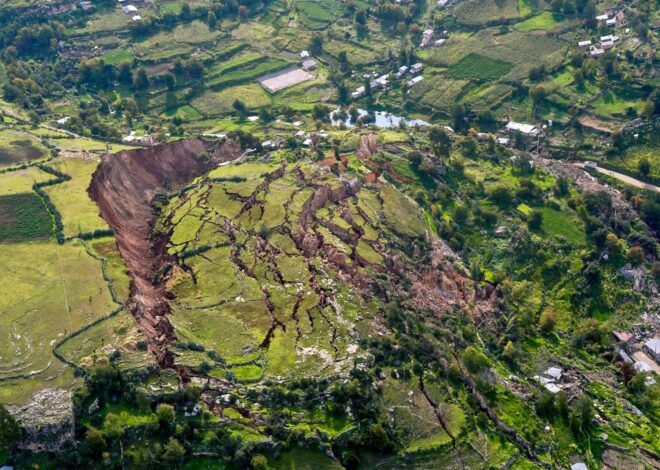
How To Survive A Gamma Ray
Welcome to our ultimate guide on how to survive a gamma ray. Gamma rays are among the most powerful forms of radiation in our universe. They originate from celestial phenomena like supernova explosions and black holes, making them both fascinating and terrifying.
While gamma rays can illuminate the cosmos, they also pose significant dangers to life on Earth if humans encounter a burst close enough to cause harm. Imagine waking up one day to an ominous alert about a gamma ray blast heading your way.
The heart races, and panic sets in. But what if there was a way not only to survive but also thrive after such an event? This guide will navigate you through understanding gamma rays, their dangers, preparation strategies, survival tips, and coping mechanisms for any psychological aftermath that may arise.
Whether you’re a space enthusiast or just curious about survival tactics in extreme situations, this article aims to equip you with essential knowledge—because being prepared is always better than being surprised!
What Makes Gamma Rays Dangerous?
Gamma rays are a form of electromagnetic radiation. They have the shortest wavelength and the highest energy on the spectrum. This unique property allows them to penetrate most materials, including human tissue. What makes gamma rays particularly dangerous is their ionizing nature.
When they interact with atoms in our bodies, they can displace electrons, leading to cellular damage or mutations. Over time, this increases the risk of cancer and other health issues. Unlike alpha or beta particles, which can be blocked by simple barriers like paper or skin, gamma rays require dense materials for shielding.
Concrete or lead is necessary to reduce exposure effectively. In an unfortunate event involving gamma radiation—such as a nuclear incident—the effects may not be immediately visible. Symptoms could take days or even weeks to manifest, complicating detection and response efforts significantly.
Preparing for a Gamma Ray Event
When it comes to preparing for a gamma ray event, knowledge is your best tool. Understanding the nature of these high-energy emissions can make all the difference. Start by creating an emergency plan. Identify safe locations within your home that can provide protection from radiation and have supplies ready.
Stock up on essentials like food, water, and medical kits. Consider investing in a radiation detector. This device can help you assess danger levels in case of an incident. Stay informed about local alerts or warnings regarding potential cosmic events. Awareness will empower you to act swiftly if needed.
Educate yourself and your family about protective measures such as staying indoors during an event and sealing windows or doors with plastic sheeting for added security. It’s not just about having supplies; mental preparedness matters too. Discuss scenarios openly with loved ones to build confidence in navigating emergencies together.
Tips for Surviving a Gamma Ray Blast
When a gamma ray blast strikes, your immediate response can be crucial. First, seek shelter. The thicker the walls and roof overhead, the better it is for protection against radiation. Keep essential supplies on hand. Stock up on non-perishable food, water, and medical kits. Having these items ready can make all the difference in case of prolonged isolation.
Stay informed through reliable sources like local authorities or emergency services. Understanding current conditions will help you make smart decisions about safety measures. Limit exposure to external elements as much as possible.
Use lead or concrete barriers if available; they absorb harmful rays effectively. Stay calm and think clearly. Panic can cloud judgment and hinder survival efforts during a crisis situation where every second counts.
Understanding the Aftermath of a Gamma Ray Event
The aftermath of a gamma ray event can be devastating. These high-energy bursts can significantly alter the landscape and atmosphere, leading to catastrophic consequences for life on Earth. Radiation exposure is one of the primary concerns. It can damage DNA, potentially causing mutations or cancer in survivors.
The intensity of this radiation may also affect electronic devices, leaving communities without power or communication. In addition to physical impacts, there are psychological effects. Survivors may grapple with fear and uncertainty about their future.
Communities could face challenges in rebuilding not just infrastructure but also trust among residents. Natural resources like water and food supplies might become contaminated. Access to clean water becomes critical during recovery efforts as contamination poses long-term health risks.
Understanding these factors is crucial for effective emergency response planning and community resilience strategies moving forward.
Coping with Post-Traumatic Stress Disorder (PTSD)
Experiencing a gamma ray event can leave lasting emotional scars. It’s essential to recognize the signs of PTSD, which may include flashbacks, anxiety, and heightened sensitivity. Finding support is crucial. Reach out to friends or family who understand your situation.
Sometimes just talking about your feelings can provide relief. Professional help should not be underestimated. Therapists trained in trauma care can equip you with coping strategies tailored for your needs. Mindfulness and grounding techniques are effective tools as well.
Engaging in activities that keep you present can alleviate overwhelming emotions. Consider joining a support group where shared experiences foster healing connections. Knowing others have walked a similar path can lessen the weight of isolation.
Self-care practices such as journaling or art therapy allow for personal expression and reflection on your journey toward recovery.
Conclusion: Living in an Age of Advanced Technology
As we navigate a world increasingly influenced by advanced technology, awareness and preparedness are key. Gamma rays may seem like a distant threat, but understanding them can empower us to take proactive measures.
With the right knowledge and tools at our disposal, we can mitigate risks associated with gamma ray bursts. Staying informed about potential hazards allows us to plan effectively for emergencies. Moreover, fostering community resilience is essential in this technological era.
By sharing information and strategies on how to survive a gamma ray event, we strengthen our collective ability to cope with unexpected challenges. The age of technology brings both wonders and worries. Embracing education around these topics ensures that while we marvel at advancements, we’re also ready for whatever unforeseen events might come our way.



